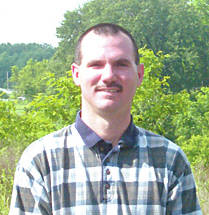Ohio hunters checked 10,415 wild turkeys during the first week of the wild turkey hunting season, April 23-29. The youth season saw 1,895 birds checked in the weekend before.
Locally, those harvest numbers are down a little from last year but I don’t think it is because a lack of birds. I think it really has more to do with the late start to the spring. When opening day arrived, we were just finishing up the leftovers of winter like weather. There was yet to have any new growth in the fields to attract the birds for feeding and many of the hens were just starting to think about nesting. I expect those harvest numbers to continue to get better as the weather continues to become more spring like.
Ohio’s spring wild turkey season is divided into two zones: a south zone, which is open from Monday, April 23 to Sunday, May 20, and a northeast zone, which is open from Monday, April 30 to Sunday, May 27.
In 2017, hunters in the south zone checked 10,293 wild turkeys during the first week of the season.
Hunters are required to have a hunting license and a spring turkey hunting permit. The spring season bag limit is two bearded turkeys. Hunters can harvest one bearded turkey per day, and a second spring turkey permit can be purchased at any time throughout the spring turkey season. Turkeys must be checked by 11:30 p.m. the day of harvest.
Hunting hours in the south zone are 30 minutes before sunrise until noon from April 23-May 6 and 30 minutes before sunrise to sunset from May 7-20. Hunting hours in the northeast zone are 30 minutes before sunrise until noon from April 30-May 13 and 30 minutes before sunrise to sunset from May 14-27.
Hunters may use shotguns or archery equipment to hunt wild turkeys. It is unlawful to hunt turkeys using bait, live decoys or electronic calling devices or to shoot a wild turkey while it is in a tree.
• The spring season has arrived, offering many opportunities for Ohioans to help protect young wildlife. Each year, Ohio Department of Natural Resources officials offer this simple advice: enjoy wildlife from a distance, and leave young animals alone. Wild animals are born to live their lives in the wild, and sometimes good intentions can hurt their chances of survival.
A young wild animal’s best chance for survival is with its mother. Most wildlife taken in by people do not survive, except when handled by specially-trained personnel. In many cases, a young animal collected by a person was not lost or abandoned, but was simply waiting for a parent to return.
Many adult wild animals will leave their young alone while they forage for food or to divert the attention of predators away from their vulnerable young, especially during daylight hours. In the case of white-tailed deer, a doe will hide her young from predators by leaving it alone in a secluded spot, such as a grassy meadow or a flower bed. A hidden fawn has virtually no scent, and when the fawn is left alone, it is difficult for predators to find. The doe is usually nearby and will tend to the fawn during the night.
Baby birds that have fallen from their nests are one of the most common wildlife species that are removed from the wild by humans. Contrary to popular belief, human scent will not prevent the parents from returning to care for their young. Individuals should return baby birds back to their nests and walk away so the parents can continue to feed the birds without fear of humans.
If individuals find a young animal that is visibly injured or clearly in severe distress and may need assistance, visit wildohio.gov/staywild before taking any action. Specific information for commonly encountered wildlife species is available to help guide people on how to best help the animal.
State and federal laws protect and regulate wildlife in Ohio, and only specially trained and licensed wildlife rehabilitators, with special permits issued by the ODNR Division of Wildlife, may possess and care for native wild animals. These laws are in place for the benefit of humans as well as wild animals.
To further protect young and vulnerable wild animals, keep pets under control so they do not raid nests or injure wild animals. Also, remember to keep pets inoculated against parasites and diseases before venturing out this spring.
Always check for nests before cutting down trees or clearing brush. It is best to cut trees and clear brush in the autumn when nesting season is over. Teach children to respect wildlife and their habitat, observing wildlife from a distance.
Contact a local wildlife official before taking action. Call 800-WILDLIFE (800-945-3543) or visit wildohio.gov/staywild to connect with the proper individuals and to read about species-specific guidance. Human intervention is always a wild animal’s last hope for survival, never its best hope.
Until next time, Good Hunting and Good Fishing!




